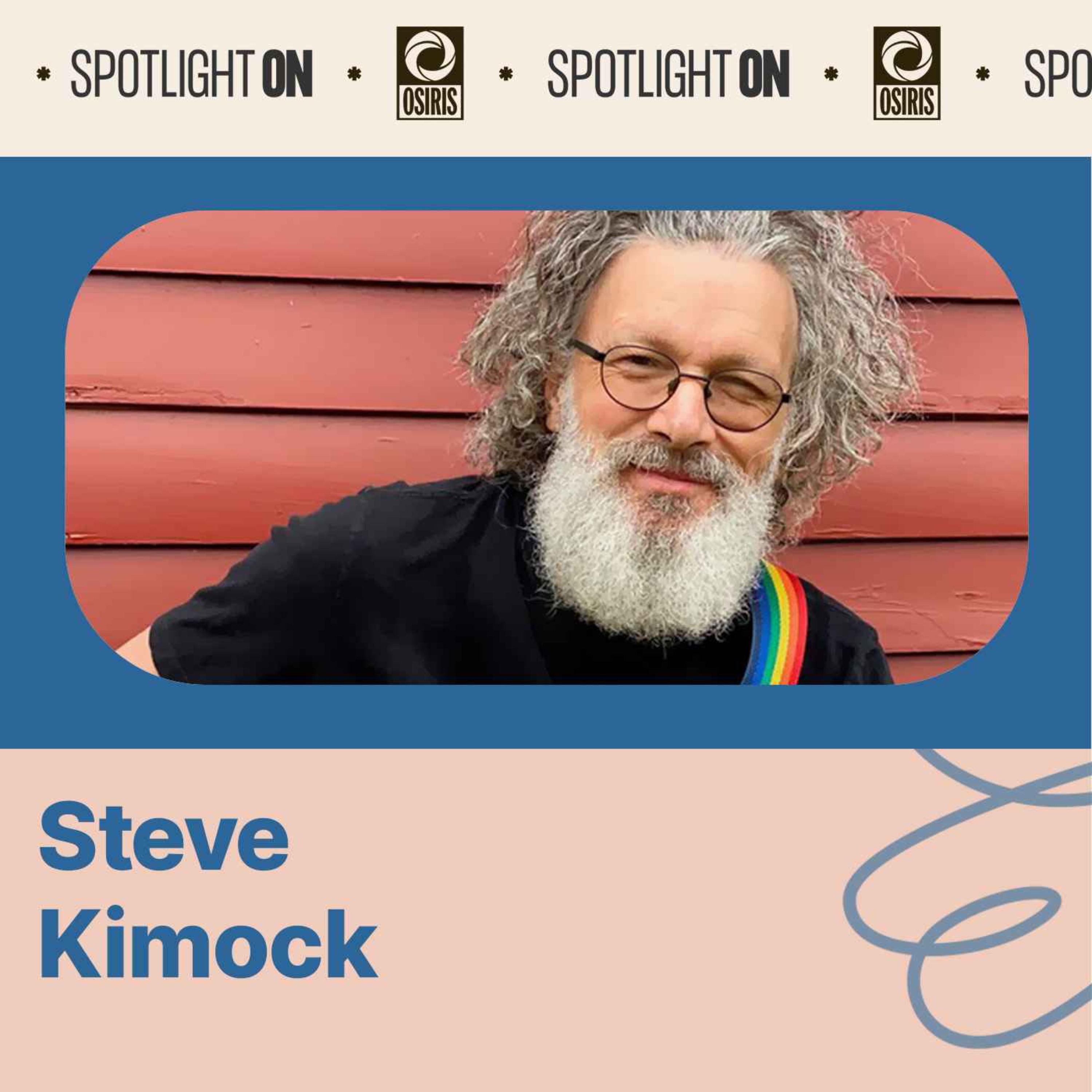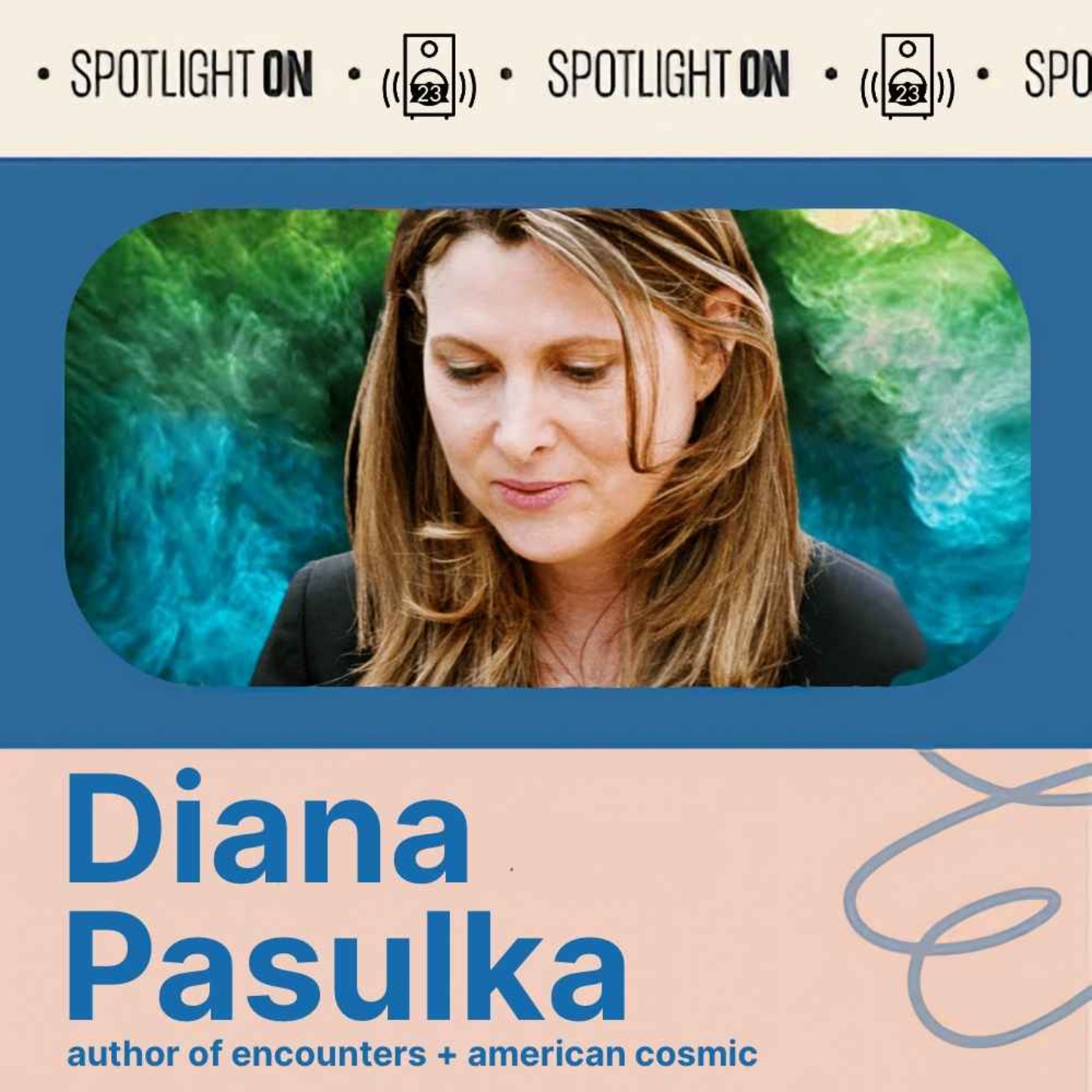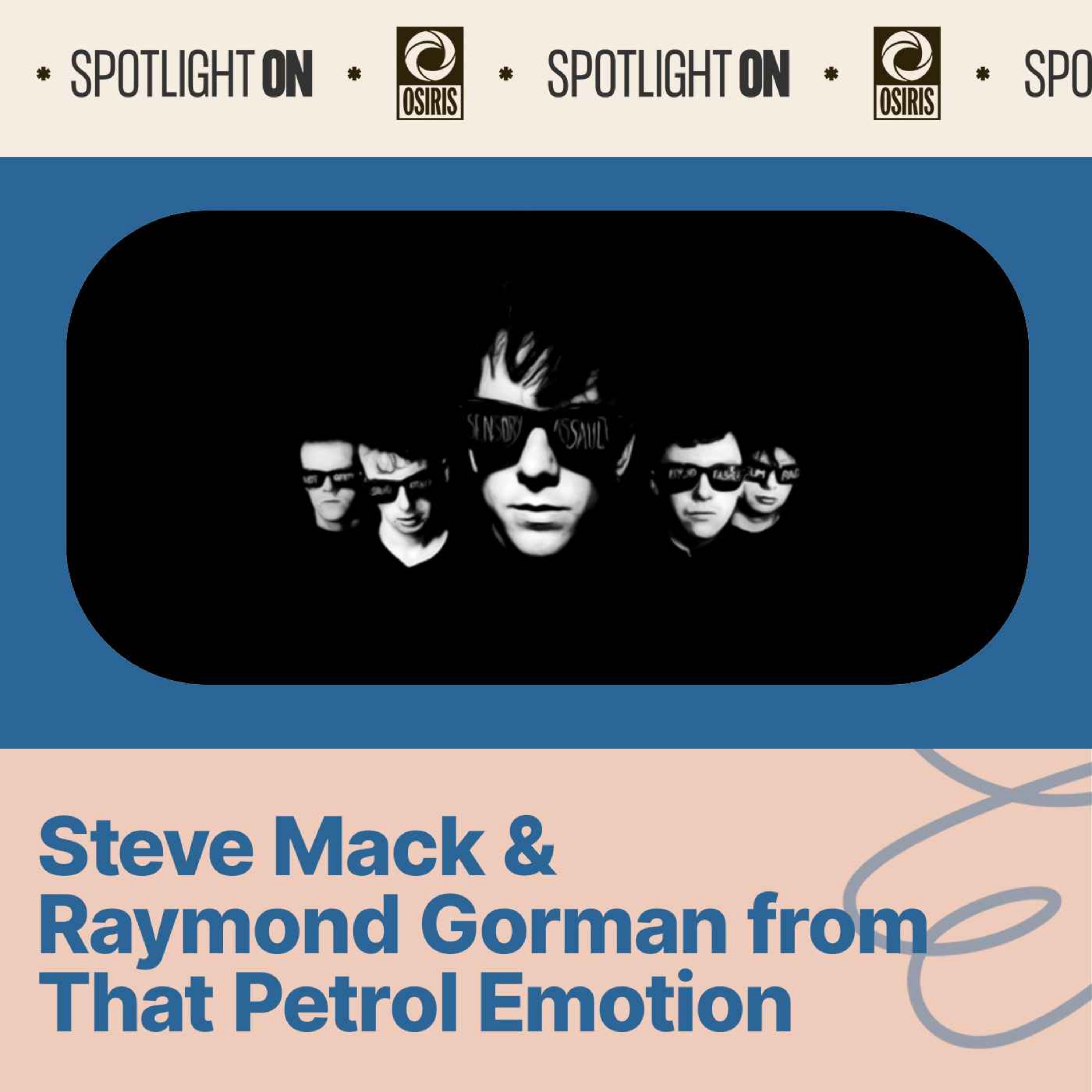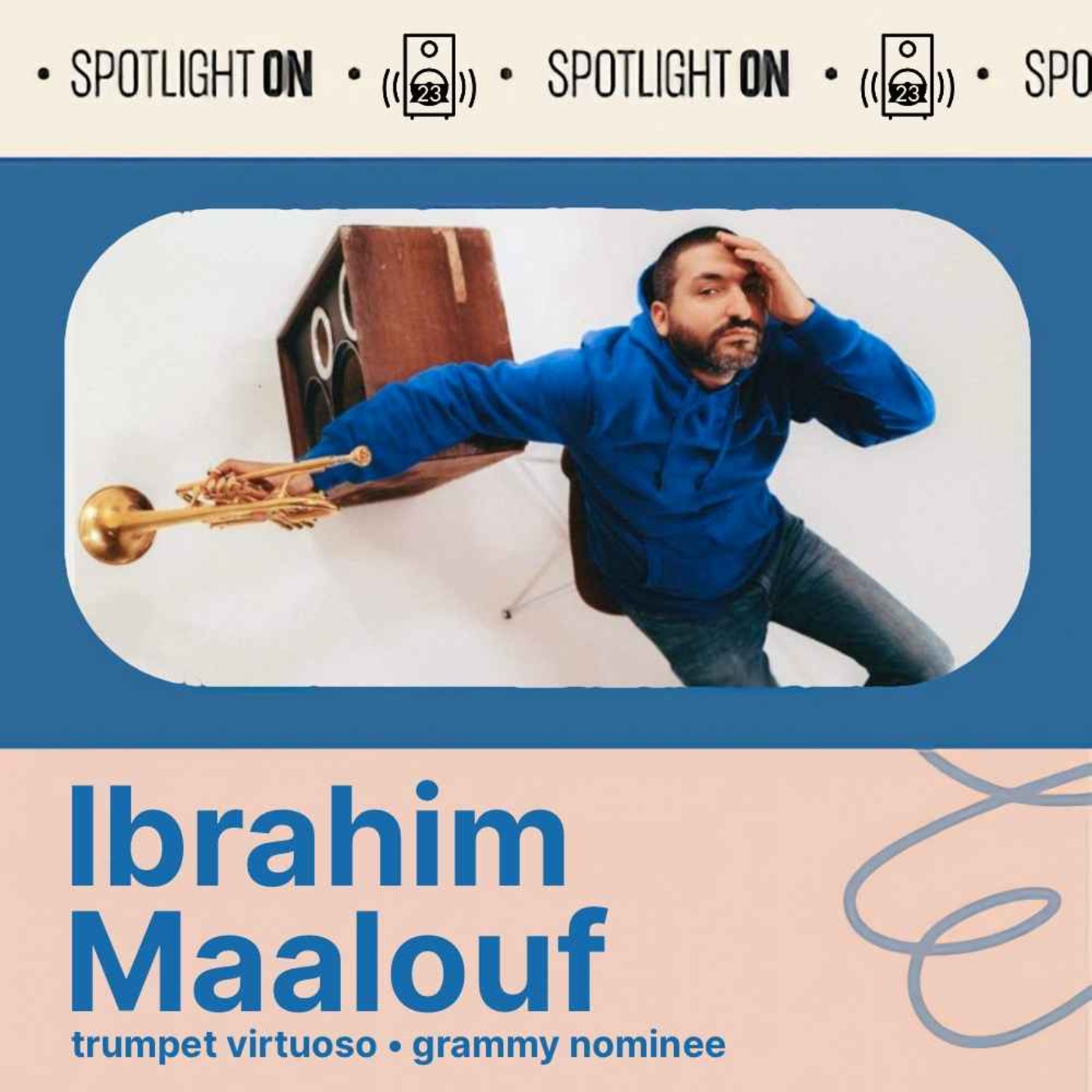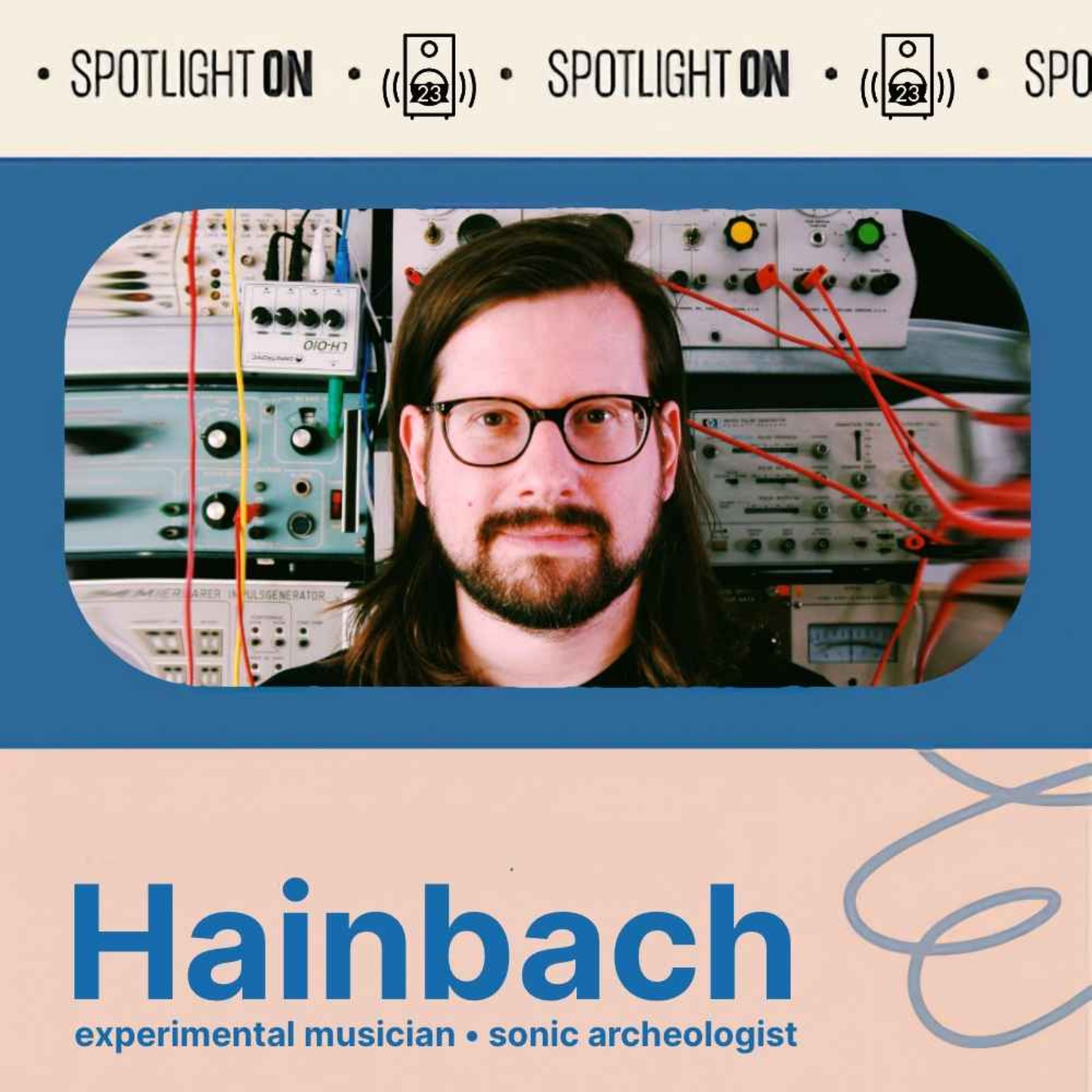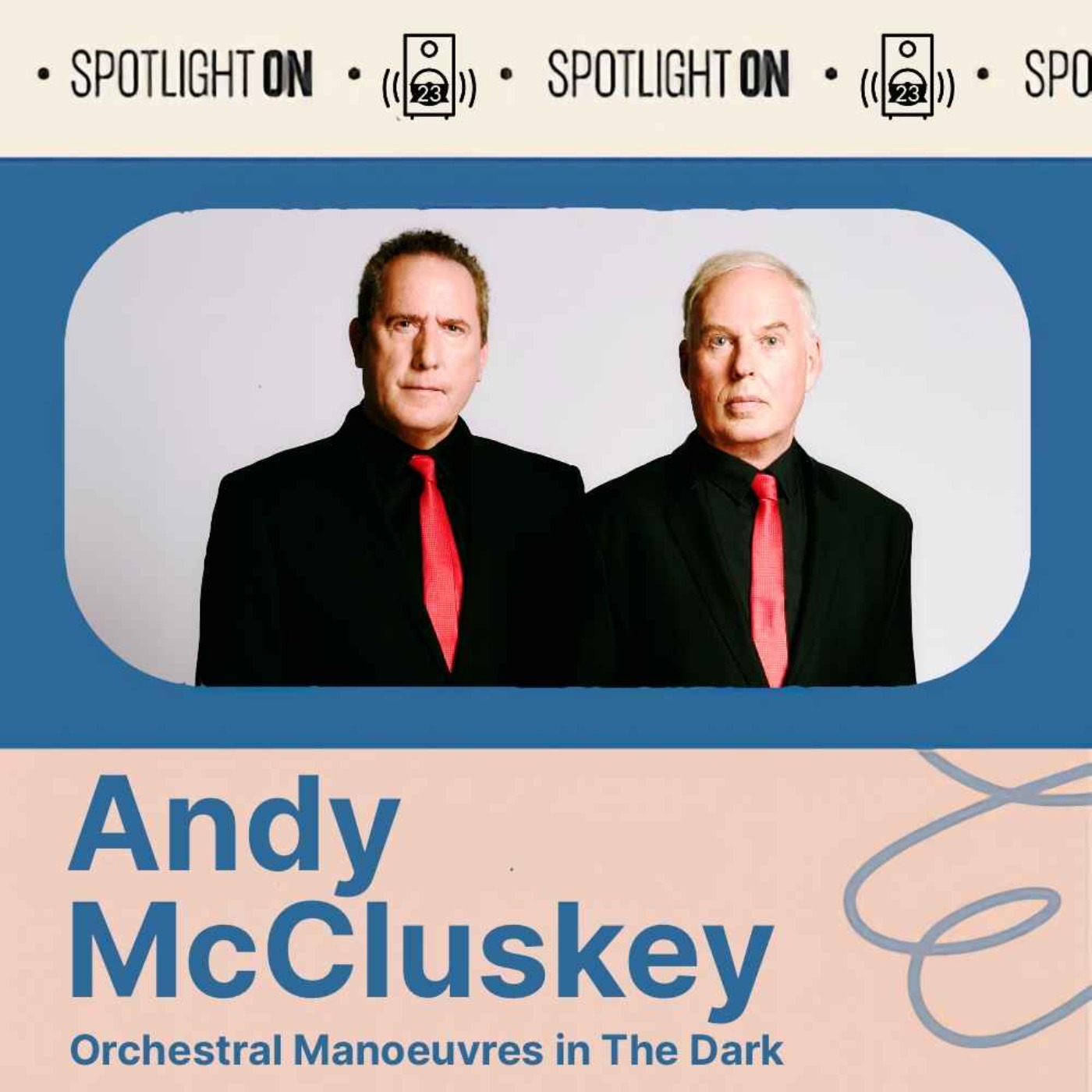Laura Hutfless - FlyteVu
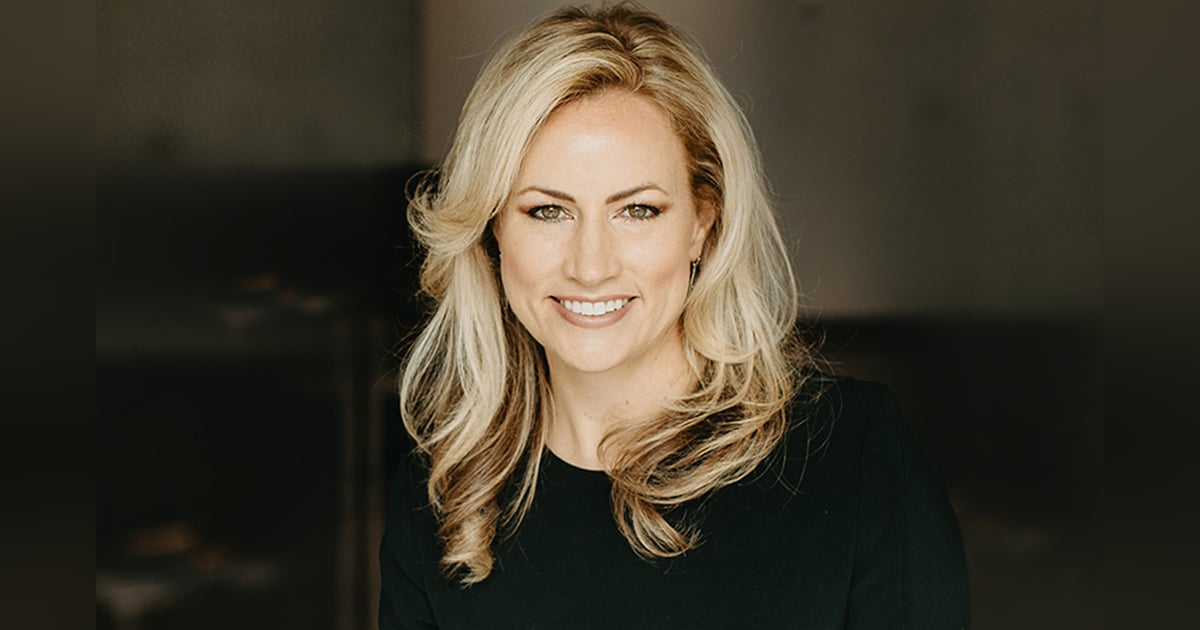
LP chats with Laura Hutfless, Co-Founder of FlyteVu. FlyteVu is a marketing agency that connects brands to consumers through compelling storytelling, unparalleled experience, and the authentic power of music.
LP chat with Laura Hutfless, Co-Founder of FlyteVu. FlyteVu is a marketing agency that connects brands to consumers through compelling storytelling, unparalleled experience, and the authentic power of music.
FlyteVu represents brands like Bumble, Cracker Barrel, Vanderbilt University Medical Center, among many others.
In this episode Laura shares the campaigns she's been working with her clients post COVID-19 and George Floyd and the importance of brands "standing for something."
Hosted on Acast. See acast.com/privacy for more information.
Lawrence Peryer: Where are you? Are you working from the office at this point? Are you at home?
Laura Hutfless: No, we’re all working from remote locations now and so, yeah, we have the privilege of doing that. We’re able to do that as a company. Yeah, we’ll figure out how that looks in the next few weeks but right now we seem to be doing OK.
LP: And during normal times do you have an office or are you remote employees?
LH: Yeah, we have offices in Nashville and Austin so everyone is based in Nashville now and so we work in the [unintelligible 00:01:42].
LP: Got you. Oh, that’s fun, that’s very great. So I think what I’d love to do, if it’s OK, is I’d love to roll back maybe 90 or 100 days or so and really talk about the impact of all the different – the societal events of the last three or so months on your business, but I was hoping we could start with maybe – if you could level set a little bit and tell our listeners of what FlyteVu is and what you all are up to in normal times.
LH: Mm-hm, well, the same thing that we’re up to now actually, is what we do. So we’re an entertainment marketing agency and we help brands integrate into pop culture. That looks differently for every client, so it can be a scalable, repeatable entertainment platform in music that we’re a building for them. It could be a content series. It could be a series of events; at this point virtual events, and it could be alignments or integrations and [unintelligible 00:02:53]. We have done Super Bowl campaigns really helping brands understand – well, actually helping them understand what their voice is and how they need to then integrate into the conversation.
LP: And how much of that work around – especially sort of the voice identification or finding the right voice, how much of that is about process on your end? Like do you have something you would consider a proprietary process or a playbook that you run to sort of draw that out?
LH: Yeah, we do have a two phase process that we work through with all new clients, and the first phase really focuses on understanding the client, their goals, their objectives, their products, the industry that they’re in. My favorite part of this job is learning so that’s the most exciting piece for me, so once we go through that, what we call onboarding process, then we’re able to then craft programs and strategies specific to them, that are authentic to their brand and their consumer.
So I always challenge my team with, if we have created a program that you could perhaps slap another brand onto it and it wouldn’t change the program or the messaging, then we haven’t created an effective program. It has to be unique to the client.
LP: That makes a lot of sense, and you used the word very quickly that I figured we’d get to, which is authenticity, so I would imagine that that’s the keystone of any – certainly any success campaign but it has to be the thing you’re looking for to create that resonance?
LH: Yeah. Sadly, I think that term has turned into a buzzword that everyone likes to use, but if you really dive in – it is the most important thing but it takes time to really understand that and create it. You don’t just align with a celebrity and think it’s authentic. Like you’ve really got to dive in and understand who you are, what you stand for, your why, your purpose and then find the right storytellers who align on all of those metrics.
LP: Yeah, so can we talk for a quick second about maybe a couple of illustrative campaigns that sort of represent the best of what you do, or maybe something you were most excited about in the pre‑Covid world. What would be maybe a couple of campaigns listeners might have encountered?
LH: Well, something that people might not know about our agency is that everything we do there is a giveback component or there is a culture changing component to it. It’s the reason why my partner and I started the agency five years ago. We wanted to change the world and we knew that pop culture had the ability to do that and brands have the funding and the voice and the reach to come alongside and effect change as well.
So looking at the programs that I'm most proud of, it’s the programs that really we have affected culture in some way. I’ll give a few examples. The biggest one most people see or people will suggest will probably pop, is the Super Bowl program we did for Bumble. It was the first female led Super Bowl campaign in a male dominated sporting event and that ad was the most engaged ad on Facebook, which is the staff that we were trying to reach with a female lead, a female lead of color, Serena Williams, and an all‑female cast crew, creatives, etc. That I was really proud of and that came together in eight weeks, so to pull that together very quickly was a feat in and of itself.
Another program, again for Bumble, a purpose‑driven company, was a program that we did called Empowered by Bumble. We partnered with C3. They’re an organization that has several festivals and we learned that only 14 percent of performers at festivals are women, and that was unacceptable, especially for Bumble that’s a female first brand.
And so instead of coming into the festival space with a popup or some interactive consumer experience, we brokered a partnership where C3 committed to not only mentoring and really working with artists to help build up emerging female talent, but also committing to additional stages and performance slots for those women, and so changing that percentage so it’s 50/50. That’s a program I'm really proud of, to give women more opportunity, those performance slots that are really hard to come by.
There are other programs we’ve done. Another program that we did was Cracker Barrel, Five Decades, One Voice, and that’s a program, again, where women are underrepresented in country music specifically, and so we paired known female talent with emerging artists to perform music, and then known female talent would perform a song by the emerging artist to help bring awareness to that emerging talent.
We created videos. It was a massive campaign. It was picked up in “Good Morning America” and “Today’s Show,” and integration into the Macy’s Thanksgiving Day Parade. It became one of the most successful campaigns we’ve ever created with the brand that really gave women a voice in music. So I'm really proud of our campaigns that, yes, they deliver on the objective of awareness and sales and engagement in all the typical metrics that we always, as an agency, add that last metric which is, is this changing culture, is this leaving a positive footprint?
LP: That’s incredible. I don’t think I was fully aware about that element to your business and that’s maybe something I’d like to explore more in a couple of minutes. I think I have a sort of somewhat nerdy question about that. How does that the campaign come together in terms of sort of finding the social objective? Does the brand bring it to you? I don’t know, if there’s a campaign you’d be comfortable sort of dissecting a little bit and just taking us through how the various marketing objectives and social impact objectives align? I’d love to hear that story.
LH: Yeah, well, the brand has to stand for something and I would start with every brand these – especially these days – they need to have a purpose. It is no longer a nice to have; it is a must have. So our clients, they know by working with us that that is a requirement and so I would say all of our clients have a purpose statement and a mission. That’s where we start. I’ll give the example of Enterprise. You’ve probably heard of their tagline – could you say it off the top of your head – “Enterprise, we’ll pick you up.”
LP: Oh, “We’ll pick you up,” OK, I'm sorry.
LH: Everyone always recognizes it when you hear it.
LP: I’m still having my second cup of coffee.
LH: Yeah, right, OK. That will pick you up too, so that’s it, so Enterprise tagline, you’ve probably heard it, seen it in commercials. It’s not just about picking people up in cars. It’s about picking people up like hospitality and kindness, and that is their brand differentiator. So as we learned that in the onboard we started thinking how do we build a program in music – which is where they needed to be – how do we build a program that picks people up and how do we encourage consumers to pick others up by engaging in this program?
So we added a couple of challenges for ourselves, rather than just do something in music like it’s impressions, right? We never back down from a challenge, so with that we created a program called Share the Code, Hit the Road. Essentially, we created a once in a lifetime event with an artist, and that happened to be Zac Brown. We pulled in Cirque du Soleil so it was really a once in a lifetime theatrical experience.
The only way in was through acts of kindness and so we started with two fans. We gave them codes. They were able to download those codes on a site that we built. Those codes were good for a ticket to the show, a car rental and two additional tickets to share with friends who needed picked up. They’ve had a rough year. They were [teachers]. They were somebody going through cancer treatments. We collected all of those stories, and so on the campaign [micro story] you can see acts of kindness being spread across the country as tickets were being redeemed.
We had people from over 40 states come in to the event. All travelling, which is really in line with Enterprise’s target audience which is the travel enthusiast, so they drove from all 40 states, came in for this event. And you could see, even at the event, how everyone was connected which was really fun to see.
So that program we then did again this past year with One Republic and Joshua Tree, and so it was a big concert in the middle of the desert, and again, everyone was there because of these acts of kindness. And so we trained consumer behavior that they know how to get this code, the only way you can get it through Enterprise.
And the most exciting part about this program for me just as a market, for someone who always thinks marketing and ROI, is that the brand was mentioned more than the artist in the social conversation. Never have I been to a concert event where a brand was mentioned more than the act on stage, and it was because people connected with the purpose. They understood why they were there. They understood the purpose of the brand and they understood that the “We’ll pick you up,” meant more than just a slogan, and so that to me was one of my favorite programs and really delivered on the objectives.
LP: That’s really amazing. Not necessarily that this has to be the case, but I'm curious as to whether the purpose‑driven component of it had any impact or carried any weight, or mattered at all I guess, to the talent? Were they interested, excited? Was it the difference between being involved in a corporate and not being involved? Is there any color there you can [comment] on?
LH: Absolutely. I mean, I sat in meeting rooms with Zac, I sat with Zac Brown and he asked that question. What makes Enterprise different from Kentucky Fried Chicken? Why would I partner with Enterprise, because at the end of the day a dollar is a dollar, and to be frank the dollar – I mean Zac has been quite successful, right? It’s not about the money at that level anymore. It’s about what is a unique experience I can provide to fans? We delivered on that with the Cirque Du Soleil integration. That’s something he couldn’t have potentially done himself. We could bring that to the table, so that was exciting.
But then also, what is the impact and what is the footprint and what is the message I'm sending? We have some case studies up on our website, but in that particular case study Zac talks about how meaningful it was to do something that had – that just had a longer lasting effect than a onetime concert. Like you literally could read these stories and know why everyone was there and you could feel it in the audience.
And Ryan Tedder – we worked with One Republic – commented on stage too about how this was the best event he had ever done because he knew why everyone was there and it just felt good, like it felt like positive energy, I think they can feel that.
LP: Yeah, and that’s incredible for the brand partner to have the artist commenting like that, that’s it’s unscripted or not entirely prompted. That’s really an organic value‑add that probably you can’t put a dollar amount on that.
LH: Yeah.
LP: So help me understand – so now if you’re able to get in the time machine. It’s late February, early March, the news about Covid is percolating, nobody knows how seriously to take it. When did you start to feel in your bones or in your other indicators that this thing was serious and was going to have an impact on your business, your clients and your employees? Can you put yourself back in the run‑up to that?
LH: Yeah, I can. I know exactly where I was. Mid‑February is when I raised the flag, which was premature because it hadn’t really – maybe it had come to the US. I think no one knows that for sure, I know, but companies weren’t talking about it. No one was buying masks yet. I have several friends who had become concerned who live not in the US, so they were making me aware and encouraging me to prepare, and so I did mid – almost early February, communicated to my team that just personally they needed to be prepared for what might come.
I was told by several that I was an alarmist. You know, I owned it and, OK, that’s fine, but I’d rather be prepared for something that may come. So we started thinking early February how we could potentially shift our programs if something were to happen, and that was a lifesaver because we were planning South by Southwest for a lot of clients. In our contract, in our vendor agreements, at that point we wrote in a lot of clauses to protect from something like this, which traditionally the pandemic wasn’t in legal contracts.
So anyway, we prepared our clients and protected our clients so we were able to transition South By to virtual solutions or to other campaigns, so we were really lucky because we were early. So we started transitioning probably late February, or at least putting together plans or options.
Something that’s wonderful about how we’re set up internally is that we have a creative team, a PR team, an experiential team, a digital social team, a media team and a tech team so we’re not – like a lot of agencies may just be experiential. They really took a hit. That’s only one of six parts of our agency so we’re able to shift then to really focus on virtual and tech and digital and content and social and we weren’t affected and we were able to help our clients shift there as well, so it was a lot of work because, you know, re‑planning campaigns takes time, but we were able to move really quickly for our clients and some [overtalking].
LP: Does that mean at the most base level you were able to preserve billings?
LH: Yeah, well, so it’s interesting, depending on the category, right? So we had some clients who – like Norwegian Cruise Lines is an example, right, they obviously were one of the first that were affected so we had to pause some things for them early on. We had other clients that had to furlough their staff, so some spending paused.
There was another category of clients that just dove right in. Tech companies, gaming, liquor is doing really well right now, right, so there are some companies that dove into this and saw it as an opportunity. And then we had a number of new clients come to us who realized that entertainment and pop culture were the way to reach consumers, or are the way to reach consumers, and wanted to understand what the options could be, so really it was different across the board.
At this point everyone has come back. They’re spending again, we’re starting to explore what the rest of the year, Q4 and Q4 look like, so I'm feeling really good about the rest of the year, but we haven’t lost any clients.
LP: And outside of South By did you lose tours or physical events that you had campaigns planned around?
LH: Oh, yes. Any live event, any concert event, any festival, all the festivals obviously through the end of the year, and so we just transitioned that programming. Or if we had talent deals that were built around an event we transitioned it to a virtual event or something else that the talent was excited about.
I think the good news about this collective experience is – and I hate to say we’re all in it together but it’s true – we’re all experiencing it in the same way and so there is an understanding we’re going to work together to help everyone get through it. When something is terminated – that’s usually not the case – but in this case, you know, the contracts kind of went to the wayside and everyone said, “We’re in, we’re going to be good partners to everybody, let’s figure it out together.”
LP: Yeah. I think what’s interesting about that is that it’s not like – I mean to your point, to say it a slightly different way, it’s not like this was just happening to you or just happening to Nashville and I could take my book of business and just go down the street to somebody else; there was no somebody else. It might change regionally a little bit as we start to emerge, but I think that that’s – it’s a very relevant point that the playing field was extraordinarily level, at least on the business side, but not necessarily on the socioeconomic impact.
So would you be willing to maybe share a campaign that sort of was tailor‑made for these times? You know something that you guys had to come up with that maybe you otherwise would not have done?
LH: Yeah, I’ll give another Bumble example. Actually, I’ll give two examples. One is from Bumble. Obviously they’re a dating app and people meet online and then the actual next step is to meet in person. That obviously can’t happen and so the good news is Bumble already had features. They had a video chat feature in the app so you could virtual date. That existed.
So we repositioned our marketing and our focus on that feature. They launched a number of other features to complement that and so to announce that we partnered with Tiffany Haddish and Common. They had not really come forward with their relationship or friendship, etc, and so we decided this was a great partnership for Tiffany and Common to actually do a virtual date.
At the time there was no production. You can’t send in crews. That’s not available so we just gave them the cameras and said you capture the experience, how you would actually have a virtual date. So the opportunity for brands, and still in this time, is creators are sitting at home wanting to create so give them the tools to create and let them create. It’s the best content you’re going to get back.
It was the most successful campaign, or one of the most successful that Bumble has ever had because everyone loved seeing the authentic at‑home life of these folks that we usually don’t get to see behind the curtain, and through this campaign they did. It was a respectful, fun, creative date. They danced. They watched movies together. All the things that I would say us common folk do as well, and I think it really resonated with consumers, and so that was one of the most successful, again, campaigns where we would normally have never given carte blanche to talent to create what they wanted but in this case it turned out really well.
LP: Yeah, that’s really neat on a lot of levels. I love the idea that Bumble also had like a product solution, you know? As you were speaking earlier I was thinking how did this impact Bumble? I didn’t realize they have a video component. I mean, that’s such – that’s like served right up. That’s a wonderful campaign to be able to execute. And to your point about being able to let the talent or the creative people do what they do, that just rings the authenticity word again. That’s a fun campaign. That’s phenomenal.
LH: And the giveback component of that campaign is that they ended up donating meals to hospital workers and made donations to restaurants in their local community, small businesses who are obviously being affected by people not being able to go on dates, so we wanted to give funds and grant some money to help those businesses out, so again, always integrating that component.
Another program I want to mention is a campaign called Gratitude. We launched it for Vanderbilt University Medical Center, who is a client of ours. I’ll tell you the reason why we launched this program is I early on was exposed to Covid and they had called me in for testing. And so I went into the tent – this is early on and it was a really scary experience; at that point little was known about the virus. It had maybe been in the US only one or two weeks – and so I walked in and everyone is fully covered and it was silent and, you know, everyone was wearing masks. You can barely see the human.
It was such a frightening experience for me that I thought, what can we do to make this more calming or at least bring some fun or joy? I mean these nurses and doctors have to work here for 16 hours a day – at least I can just walk in and walk out – but how can I help create a better experience for them? And so obviously, working in music I know that music can lift spirits and bring joy and encouragement.
So we created a platform where consumers or people could log onto the platform, they could donate a song to a playlist, and that song was then played in testing centers and in hospitals at Vanderbilt. Further, it was put on a public playlist that anyone could access and a lot of other hospitals ended up picking that up as well.
Then we had an artist a day donate a gratitude, an actual live performance on the platform for 30 days. We had scheduled about 30 artists, 85 ended up contributing so it ended up becoming a really big campaign. Thousands of notes and donations and songs and letters were donated to these frontline workers. Brad Paisley ended up doing a pop‑in live stream to the hospital. There is a live stream concert coming up so that platform has really grown and it was a really innovative site. We pulled in Spotify’s API. They were great partners so we turned that in eight days. Eight days from the time I walked into the testing center to the time we launched it so I'm really proud of that program too.
LP: Phenomenal. So I'm going to assume that those are just a couple of representative examples of the types of things you’ve been doing over the last months and your business is coming along. You’re scrappy, you’re doing what it takes to keep your momentum, to keep your partnerships intact. And now we go back two weeks ago and we’re faced with the situation that is, you know, sort of much more difficult to commercialize, if you will, to even wrap your head around. How do you as a company, made up of employees and a community internally that you care about, address and deal with that, as well as – is there a tangible impact on your business and your partners? Can you talk a little bit at all about that?
LH: Yeah, I'm assuming you’re talking about George Floyd? I just want to make sure on that?
LP: I’m talking about the murder of George Floyd, yeah.
LH: OK, I just want to make sure we’re talking about the same thing.
LP: Yeah, I'm sorry to be circumspect about it.
LH: No, that’s OK. Yeah, so that kind of happened over a weekend and so Monday morning we called our whole team in and had an open dialogue about, one, as an organization how could we be better, let’s be introspective and see what we can do. Out of that came a few action items. One is obviously we participated in Blackout Tuesday and that was really led by the music industry.
In that we thought, well, we understand the purpose of that day of solidarity but we wanted to do more, and we are hearing from the industry that more people were looking for some action. Everyone wants to do something. When we think about our business, really entertainment, pop culture and music, is really built on the black community and music and we thought, well, we have the privilege of taking this day off, and what if instead we donated our paychecks from this day to organizations that are fighting for racial equality, so we committed to do that as an organization.
And others we are hearing were wanting to do the same thing so we created something called donatemywage.org and it’s a site you can go to, to calculate your wage for the day and there are ten organizations you can then donate to that are all fighting for racial equality, and you can share that, etc.
We put it out there into the world just to do a good thing and use our tools and our skillset to do what we could. I'm not able to announce it here but there is a celebrity who saw that and is wanting to adopt that now and is going to make a pretty large commitment and carry that platform on, which is amazing, and the best gift to us to know that something that we did just to put out into the world to help others is going to live on, so that was one thing that we did.
Obviously education; educating ourselves, educating our clients, bringing in resources to do that, and then advising our clients on how to navigate this. You know, first and foremost they have got to make sure they’re doing the right things internally before externally, and that is my advice to all my clients. And so that’s really where our conversations start and it looks different for every brand because they’re all in different places, and so we’re working through that right now with all of our clients.
LP: Yeah, so what’s your sort of prognosis for maybe, to a certain extent, FlyteVu, but a little bit more broadly as you pull back? What do you see for the next three, six, nine, 12 months as the world reemerges? Will it be fits and starts? Is it going to be a steady incline? How are you guys planning for what’s next?
LH: Yeah, well, a lot of people ask me what is it like post‑Covid or when everyone goes back and I don’t agree with that statement because I don’t think there’s going back. I like how you phrase that. As things continue to evolve and emerge, how do you adapt because that’s how we viewed this.
I think if brands or partners are waiting until something goes back they’re going to be out of business, right? You have to adapt and move with what’s happening in the world. And so I’d say, looking at how people are adapting and moving with, yes, live shows and events are going to come back into play. They kind of already have. There are some small intimate gatherings and performances happening. There are drive‑ins, etc.
But you also have to consider what we’ve just walked through, is the virtual space. I don’t think that’s going away. Now we [need] those programs, which you should have always thought about, but they can’t be one dimensional. They have to be multidimensional, so there might be an in‑person event or a small secret show or whatever it might be. You also have to build virtual legs around that. You have to have a PR component. You have to have content.
You have to think of things holistically, and I think that’s what this time has taught a lot of folks, where they were solely focused on one lane or one strategy or we just show up at festivals. I hear that a lot. Our brand shows up at festivals. Well, you put all your eggs in one basket so that’s pretty risky.
We always advise our clients on never a one dimensional strategy, and so I think that’s the learning, that’s what you’re going to see. More AR, more VR, isometric mapping; I mean there are so many things, so many tools out there that brands have picked up and they’re starting to use. I'm excited by that. I'm encouraged by that. We’re working on a few of those platforms now and so I just think it fast‑forwarded the innovation and for us. For someone like me, an entrepreneur, that couldn’t be more exciting.
LP: Yeah, I think that’s a really strong point. I would also extend that by saying it took some things that were around for a while but have kind of lost their purpose? Like I think about live streaming or the webcast or the video chats. You know we’re going on over 20 years of having these in one form or another, but the killer app kind of came and went. They were just promo tools, and now I think, you’re right, these things won’t go away.
Creatives are thinking about [unintelligible 00:34:37], even thinking about their social media [unintelligible]. You know, the fact that it can be more [candid], it’s less scary to just show up and do a story or do a quick video, whereas six months ago it was hard to get artists to peel back the layer a little bit. I think, yeah, you’re right, it’s going to be just a new – these are going to be new creative mediums and it’s going to be really interesting to see how they get used and how they get bolted onto the other components. It’s an incredible opportunity.
And to your other point, anybody who is sitting around waiting; there is nothing to be waiting for. The world didn’t stop. It slowed down considerably, the look of it changed but there is a lot to do.
LH: Yeah, exactly, and what I’ve tasked my team with is – perhaps in the past we have come up with option A and B for the clients, we now have to come up with option A through F because we don’t know the outside factors over the next three to six months, so we have to think are people at home? Are they going to be out? Is there going to be a mix? We don’t know any of those items yet; to be determined, so we have to come up with programs that work, no matter what and that is a unique challenge that we’ve not had to think about before so it’s flexing a new muscle. I think that is an exciting challenge for me. Can you create a program that will be successful, no matter the medium?
LP: Yeah, that’s an amazing – that’s a great brief to put [unintelligible 00:36:15]. I really like that. Well, I want to thank you so much for taking time to tell us a little bit about your business.
LH: [Unintelligible].
LP: They do. They go fast. But in addition to thanking you I’d also love to turn off the record button in a minute and talk to you for a few minutes offline –
LH: Sure.
LP: – but thank you for making time. I'm very happy to hear that you guys have been able to adapt and that I suspect you’ll be much stronger coming out of that, so my hats off to you.
LH: Yeah, will be; thank you very much.

Laura Hutfless
Co-Founder
Laura Hutfless is a Co-Founder of FlyteVu, a Nashville-based full-service entertainment marketing agency founded in 2015 that connects brands to consumers via the power of pop culture and purpose.



















